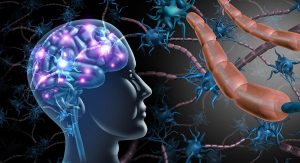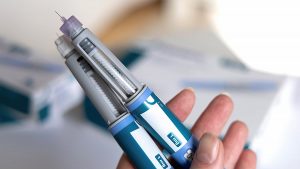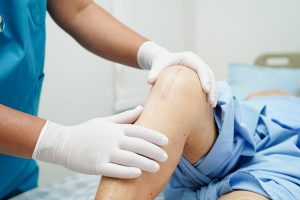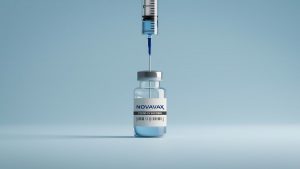(HealthDay News) — The White House and Congressional leaders said Sunday they were close to agreement on a $470 billion coronavirus package that would pump more money into a small business loan program that has run out of funding.
Roughly $100 billion in the latest economic stimulus deal would go toward hospital needs and coronavirus testing, the Associated Press reported.
“I think we are getting close to a deal,” President Donald Trump said at a Sunday briefing of the coronavirus task force.
“We have some very good negotiations going on right now, and I think you could have a nice answer tomorrow,” Trump added.
The Senate is set to have a pro forma session Monday, but no vote has been scheduled. The House announced it could meet as soon as Wednesday for a vote on the pending package, the wire service said.
As the U.S. coronavirus death toll edged past 40,000 and the case count climbed to more than 753,000 on Monday, governors across America were crafting plans to start to ease social distancing in the coming weeks.
But new estimates from Harvard University researchers suggest that the United States as a whole cannot safely reopen unless health officials triple the number of coronavirus tests that are now being conducted, The New York Times reported.
Governors in some of the states that have been hit the hardest are already calling for far more testing in the coming month.
The statistics from New York and New Jersey were hopeful over the weekend. In both states, the curve of new infections appeared to be flattening or dropping, the Times reported.
But New York Governor Andrew Cuomo emphasized the need for federal help to carry out the widespread coronavirus testing that officials say is necessary to reopen New York’s economy.
Plans to reopen take shape
Talk of potentially reopening America came after President Donald Trump announced new federal guidelines on Thursday that governors could use.
The national plan laid out three phases that would slowly return life to a “new normal” that continues to use some of the most fundamental aspects of social distancing.
“We are not opening all at once, but one careful step at a time. And some states will be able to open up sooner than others. Some states are not in the kind of trouble that others are in,” Trump said during a media briefing Thursday.
“America wants to be open and Americans want to be open,” Trump added. “A national shutdown is not a sustainable long-term solution.”
Reopening the country has become a critical goal, as the ranks of unemployed Americans swelled to 22 million last Thursday.
Coronavirus cases and deaths in several of America’s early hotspots continued to show signs of plateauing, while governors from those hard-hit states worked on their own regional pacts to help reopen those areas.
New York and six other Northeast states — New Jersey, Connecticut, Pennsylvania, Delaware, Massachusetts and Rhode Island — extended stay-at-home orders through at least May 15 while they work on those plans, CNN reported Thursday.
The governors of California, Oregon and Washington have also announced a similar regional pact, the AP reported.
“This pact is about what do we do after we reduce some of our social distancing stay home initiatives,” said Washington state Gov. Jay Inslee. “It’s more of the issue of how are we going to have consistent-as-we-can testing and contact tracing initiatives. In order for any of these three states to be successful, we simply have to have increased products available with which to do this testing. This is absolutely critical.”
On Thursday, seven Midwestern states followed suit and announced a pact of their own, CNN reported.
Phased-in reopening
Michigan, Ohio, Wisconsin, Minnesota, Illinois, Indiana and Kentucky will work together to re-open their regional economy, Michigan Gov. Gretchen Whitmer announced.
For his part, Trump continued to push for reopening at least part of the U.S. economy in early May as he released the national reopening guidelines.
The guidelines lay out three phases:
- Phase 1: All vulnerable individuals continue to stay at home. Physical distancing must be practiced in public places and non-essential travel must be minimized. If schools are closed, they should stay closed. Visiting senior living centers is still not allowed.
- Phase 2: Non-essential travel may resume. People should avoid public gatherings of 50 or more, unless physical distancing is possible. Visits to senior centers would still be prohibited, but schools and day care centers could re-open.
- Phase 3: This would be the country’s “new normal.” Physical distancing in public places is still recommended, but vulnerable individuals can resume public activities. Visits to senior centers can resume.
There is no set timeline for moving through each of the three phases, according to the AP. Governors will make that decision, but a state or region would have to experience another 14-day decline in cases before moving to the next phase, the wire service said.
Still, Dr. Anthony Fauci, the country’s top infectious disease expert, told the AP last week that the United States doesn’t yet have the testing and tracing procedures needed to begin reopening the economy.
“We have to have something in place that is efficient and that we can rely on, and we’re not there yet,” Fauci warned.
When Americans do leave their homes, federal guidance now urges everyone to wear face coverings in public to curb the spread of COVID-19.
These face coverings can be non-medical masks, T-shirts or bandanas and they can be used while out at everyday shopping spots such as the grocery store, pharmacy or gas station, the AP reported. Medical-grade masks would be reserved for those dealing directly with the sick.
Economic rescue plan
As the U.S. economy continues to falter, Americans have struggled to find out if they can receive benefits from a $2 trillion stimulus package that was passed into law in March. The financial relief is starting to be felt as state and federal agencies process millions of aid applications from small businesses and the newly jobless, the Washington Post reported.
The legislation is set to send $1,200 to millions of Americans, including those earning up to $75,000, along with $500 per child. It will also give an additional 13 weeks in unemployment aid and a four-month enhancement of jobless benefits, the Times reported.
However, funding for the Paycheck Protection Program was exhausted last Thursday, meaning that the Small Business Administration (SBA) had to stop approving applications, the Post reported. More than 1.4 million loans worth more than $315 billion have already been approved, according to the SBA.
In some good news, millions of Americans have started to see promised tax rebates directly deposited into their bank accounts, though some folks have experienced problems getting the money, the Washington Post reported.
The help comes not a moment too soon, as roughly 90% of Americans are under stay-at-home orders, the AP reported.
States battle coronavirus
New York remained the epicenter of the coronavirus outbreak in the United States, though key COVID-19 statistics have been leveling off.
In preparation for any reopening in the coming weeks, Cuomo announced on Sunday that the state will implement the “most aggressive” antibody testing program in the country over the next week, CBS News reported.
“Nobody has done testing on this level ever,” Cuomo said, but he emphasized that any plan to reopen the state includes knowing how many have been infected.
“I don’t want to have gone through all this and then say, ‘We’re reopening,'” Cuomo said. “We have to reopen for a better future than we’ve had.”
To protect against the spread of COVID-19, Cuomo issued an executive order last week stating all New Yorkers must have a mask or mouth and nose covering when they are not maintaining social distancing in public, CBS News reported.
People who violate the order could eventually face fines, but “you’re not going to jail for not wearing a mask,” Cuomo said.
According to the Times tally, as of Monday morning the top five states in coronavirus cases are: New York with nearly 243,000 cases; New Jersey with more than 85,000; Massachusetts with more than 38,000; Pennsylvania with nearly 33,000; and California with more than 31,500.
Globally, the situation remains grim. In Europe, Spain reported 20,852 deaths by Monday, despite signs the infection rate is slowing, a Johns Hopkins University tally showed. Deaths in Italy also remain high at 23,660, although numbers have begun to level off there as well.
Worldwide, the number of reported infections passed 2.4 million on Monday, with more than 166,000 deaths, according to the Hopkins tally.
More information
The U.S. Centers for Disease Control and Prevention has more on the new coronavirus.
Copyright © 2025 HealthDay. All rights reserved.

























